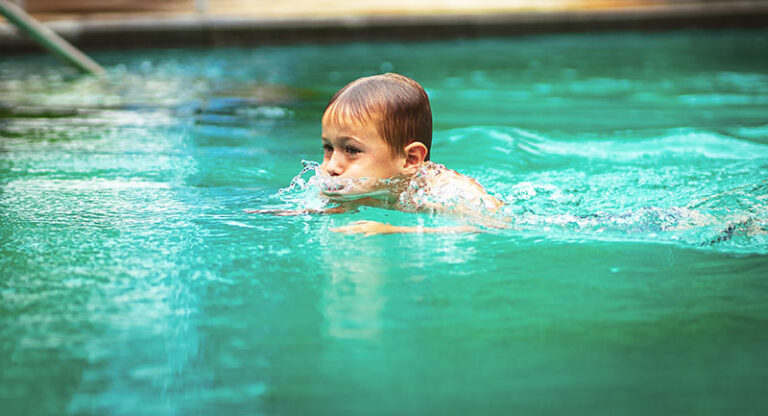BINDER: Mr Campagnolo, what’s the first thing you think of in relation to dangerous behaviour at the pool?
Daniel Campagnolo: The first thing that comes to mind is a classic: diving off the side of the pool. If the water is shallow, you should stop children doing that. The risk of injury is simply too great.
BINDER: Are there other situations that cause accidents too?
Campagnolo: Yes, for example when children play or run close to the edge of the pool, on slides or on steps. When doing so they can quickly slip up and lose their balance. Wearing comfortable, slip-proof sandals can offer some protection here, but running on wet surfaces is still dangerous. Parents should keep reminding their children of that.
BINDER: Carelessness can result in more than just falls. Sometimes it can lead to circulatory problems, sunburn and sunstroke. How can these be prevented?
Campagnolo: You can avoid circulatory problems by taking a shower before getting into the pool, or by entering the water slowly. Furthermore, it’s a good idea not to bathe immediately after eating, but to wait a while first. Protection against sunburn or sunstroke is also very simple. The important thing is to apply sunscreen with high UV protection to children’s skin. It’s even better, of course, to wear a swim shirt that provides protection from UV radiation. This is because sunscreen has to be reapplied after every dip in the pool as the water washes part of it off, reducing the protective effect. That then means it is not very environmentally friendly.
BINDER: And how can you prevent children from getting sunstroke when it’s really hot?
Campagnolo: The simplest thing is to limit time spent in the sun during the hours between 12.00 and 3.00 p.m, and ideally to avoid the midday heat completely. If possible, children should also wear a hat and move to the shade regularly. Drinking plenty of fluids is also important.
BINDER: Thank you for the great tips, Mr Campagnolo.




